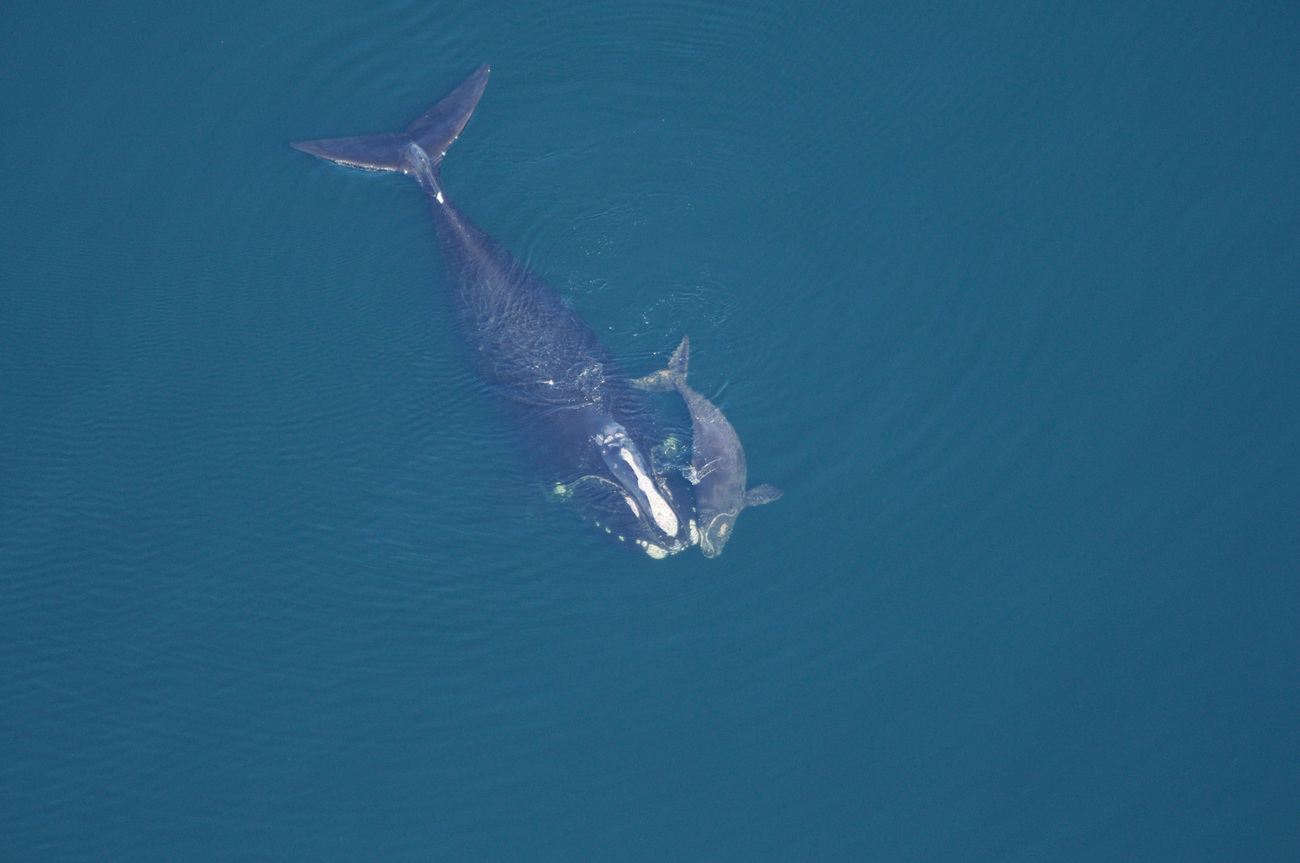Kathleen Collins
calving season critical to survival of North Atlantic right whales
calving season critical to survival of North Atlantic right whales

Snow Cone is a 17-year-old North Atlantic right whale who has recently become entangled in fishing gear for the fifth time in her life. The new gear adds to the hundreds of pounds of ropes and fishing nets that she already drags around. She was the first-known right whale to give birth while entangled, but the calf is no longer with her and presumed dead. Most recently, Snow Cone was seen off the coast of Nantucket in September. It was clear that the entanglements have taken their toll—she struggled to swim and was deemed likely near the end of her life. Perhaps no individual represents the tragedy that North Atlantic right whales face as a species more than Snow Cone.
In October, the North Atlantic Right Whale Consortium announced the latest population estimate. Only 340 individuals remain, which means conservation tactics to protect this IUCN-designated critically endangered species have fallen far short. A separate recent study suggests that only 72 reproductive females—which are essential to population recovery— are left.
Dispiriting though not surprising, the new count, which reverberated strongly through the scientific and non-scientific communities, underscores the species’ continued vulnerability and represents a renewed call of urgency to protect its remaining members. Actions by governments, industry, conservation groups and all stakeholders require swift escalation to pull the species back from the brink of extinction.
The importance of amplifying our efforts to save this species cannot be understated, especially within the context of the approaching calving season, which runs from mid-November through mid-May. A successful calving season is critical to the survival of the species.
Driven to scarcity primarily from chronic entanglement in commercial fishing gear and vessel strikes, mothers and calves follow migratory routes from New England and Canada to the coasts of Georgia and Florida, maneuvering through industrial waterways dense with shipping traffic and an estimated one million commercial vertical fishing lines in the water column. Research between 2003 and 2018 found that in cases where the cause of death could be definitively determined, nearly 90% were due to entanglement and vessel collisions.
Is this situation hopeless? Not to IFAW and other dedicated groups and individuals working to implement aggressive, well-targeted risk mitigation measures. Since 2019, IFAW has collaborated with the fishing industry, scientists, legislators, and technology manufacturers to pursue, test, and perfect the implementation of whale-safe gear. Dubbed “ropeless gear” or “acoustic on-demand gear,” it can reduce the threat of entanglement by eliminating vertical rope lines from fishing gear and clearing the way for right whales.
IFAW takes a multi-pronged approach by also advocating for maritime regulations including enhanced speed restrictions, altering shipping lanes to reduce vessel collisions, and supporting critical legislation such as the Right Whale Coexistence Act. The support offered by the IUCN Save Our Species program is a fundamental building block to achieve a long-term solution.
Key to ensuring right whale’s survival is the need to simultaneously protect the livelihoods of fishermen and other mariners. It is not a question of either or—lasting solutions must be based on recognizing the collective best interest of those in and on the water. Whales and people thriving together—that is the end game. Through the assistance provided by IUCN, that end game is achievable.
Related content
Our work can’t get done without you. Please give what you can to help animals thrive.